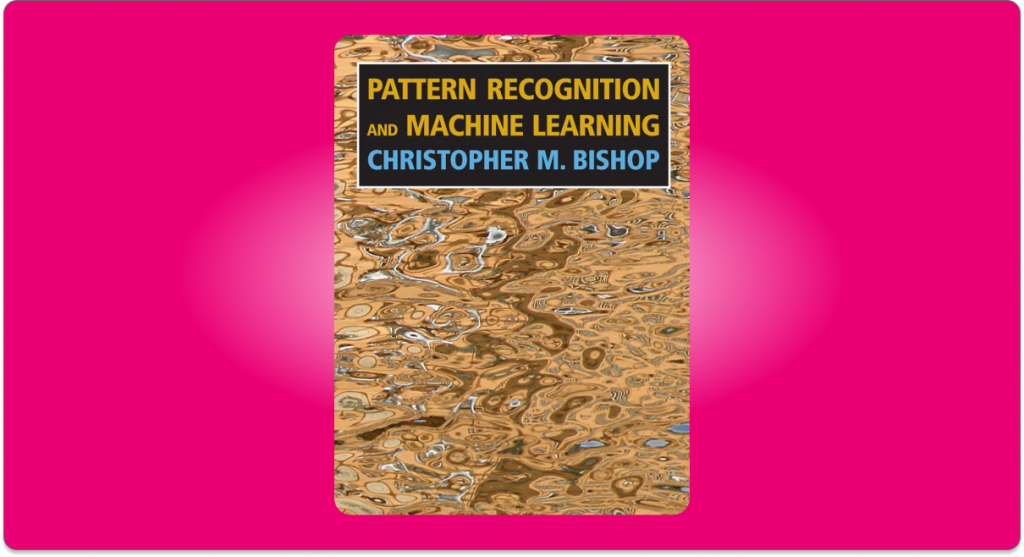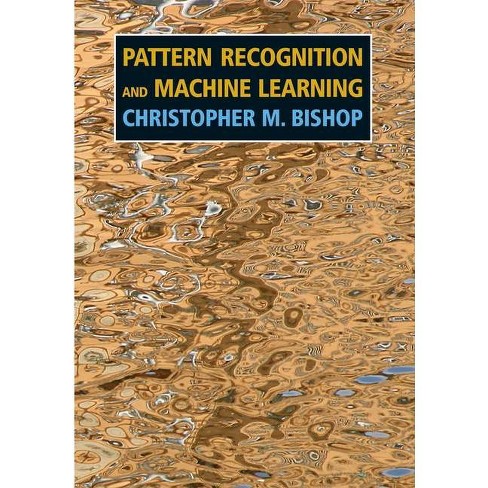What is Pattern Recognition? How is it related to Machine Learning? Answer these questions and a lot more with the famous book Pattern Recognition and Machine Learning

Pattern Recognition and Machine Learning: The following is a review of the book Pattern Recognition and Machine Learning (Information Science and Statistics) by Christopher M. Bishop, technical fellow and Laboratory Director at Microsoft Research Cambridge. You can find him on Twitter here.
Review of Pattern Recognition and Machine Learning
The dramatic growth in the practical applications of Machine Learning in the recent years has been derived from a variety of sources: more data available than ever, more processing capabilities with GPUs, TPUs, and so on, and lastly, important developments in the underlying algorithms and techniques in the field, like Bayesian Methods and Graphical Models.
Pattern Recognition and machine learning provides a comprehensive introduction to the fields of pattern recognition and machine learning from a Bayesian approach, along with the most recent developments surrounding them like varational Bayes, expectation propagation and new models based on kernels.
It is not a beginners Pattern Recognition and Machine Learning (Information Science and Statistics): mainly it is oriented towards graduates or, first year PhD students or those with an advanced Machine Learning expertise, and it assumes knowledge of basic linear algebra, calculus, and some familiarity with probability. Despite of this, it is not very mathematically heavy, and it has a lot of heuristics and approximations that capture and explain the maths without diving to deep in.
Because of this, it is a book that is widely used in Machine Learning, Statistics, Data Mining and Computer Science courses.
It includes a wide range of solved exercises, and it provides further additional resources to keep learning and deepen your knowledge.
Overall, Pattern Recognition and Machine Learning is a wonderful book to achieve a great general knowledge of both of these fields that can serve to anyone from advanced undergrads as an entry point to Pattern Recognition or to researchers to deepen their knowledge and gather some insightful explanations. We highly recommend it.
Lets see what it includes!
Contents
The chapters of Pattern Recognition and Machine Learning are the following:
- 1) Introduction: This chapter covers basic probability theory, model selection, the famous Curse of Dimensionality, and Decision and Information theories.
- 2) Probability Distributions: The beta and Gaussian distributions, Exponential Family and Non-Parametric methods.
- 3) Linear Models for Regression: Least squares, bias-variance decomposition, bayesian linear regression, and Bayesian model comparison.
- 4) Linear model for Classification: Discriminant functions, Probabilistic Generative and Discriminative Models, the Laplace approximation, and Bayesian Logistic Regression.
- 5) Neural Networks: Explanations of forward and backpropagations, network training, the hessian matrix, regularisation, and bayesian neural networks. This chapter is all about how to use Neural Networks for Pattern Recognition.
- 6) Kernel Methods: Dual Representations, Constructing Kernels, Radial Basis Function Networks, and Gaussian Proccesses.
- 7) Sparse Kernel Machines: Support Vector Machines starting from Maximum Margin Classifiers, and Relevance Vector Machines.
- 8) Graphical Models: Bayesian Networks, Conditional Independence, Markov Random Fields and Inference in graphical models.
- 9) Mixture Models and EM: K-means clustering, Mixtures of Gaussians, An Alternative view of EM, and The EM Algorithm in General.
- 10) Aproximate Inference: Variational Inference, Variational Mixture of Gaussians, Variational Linear Regression, Exponential Family Distributions, Local Variational Methods, Varational Logistic Regression and Expectation Propagation.
- 11) Sampling Methods: Basic Sampling algorithms, Markov Chain Monte Carlon, Gibbs Sampling, Slice Sampling, and the Hybrid Monte Carlo Algorithm.
- 12) Continuous Latent Variables: Principal Component Analysis, Probabilistic and Kernel PCAs.
- 13) Sequential Data: Markov Models, Hidden Markov Models, and Linear Dynamical systems.
- 14) Combining models: Bayesian Model Averaging, Boosting models, Tree based models, and. Conditional Mixture models.
Each chapter ends with a series of fantastic exercises. Pattern Matching in Machine Learning also includes various appendixes on Data Sets, Probability Distributions, Properties of Matrices, Calculus of Variations and Lagrange Multipliers. As you can see it is a book that is plagued of useful and complex material, not to be tackled by beginners on the field.
You can see some of the exercises as long with their solutions here.
Summary of Pattern Recognition in Machine Learning
Pattern Recognition and Machine learning go hand by hand.
If you are looking to get into the world of Machine Learning, then this is probably not the book for you. We recommend it for those that are looking to deepen their knowledge in the field and learn how to treat and understand Pattern Recognition and Machine Learning from a Bayesian Perspective; that is, from a pattern recognition definition with a probabilistic approach.
It is a beautifully written and illustrated book, that provides excellent intuitive descriptions and appropriate-level technical details on modern bayesian pattern recognition and machine learning. It can be used to teach a course or for self-study if some previous expertise has already been gathered, as well as for a reference on these complex topics.
Overall, we think it is a great text for anyone who already has some previous experience in probability, calculus, and Machine Learning. You can find it on Amazon at the best price here:
- Hardcover Book
- Bishop, Christopher M. (Author)
- English (Publication Language)
- 738 Pages - 08/17/2006 (Publication Date) - Springer (Publisher)
If you think this book might be too advanced for you, don’t worry we’ve got you covered. Check out our reviewed list of Machine Learning Courses. Also you can find a great list of free reviewed Statistics and Probability Courses here.
For starting in Machine Learning, after one of these courses, we would recommend a book like ‘The Elements of Statistical Learning‘ or even simpler ‘The Hundred Page Machine Learning book‘. The previous links will take you to reviews about these two where you can decide if the books are the right for you.
If these still don’t convince you, take a stroll through our Machine Learning books section, or to find texts about probability check out our Data Analysis books sections.
Also, here you can find great free tutorials about these topics.
That is all, we hope you loved the review. If you want to keep up to date with the newest materials and resources to learn Machine Learning, follow us on Twitter!

Have a great day and enjoy our Pattern Recognition Letters!
Tags: Pattern Recognition in Machine Learning, Pattern Recognition Christopher M. Bishop, Machine Learning Book.
Subscribe to our awesome newsletter to get the best content on your journey to learn Machine Learning, including some exclusive free goodies!

